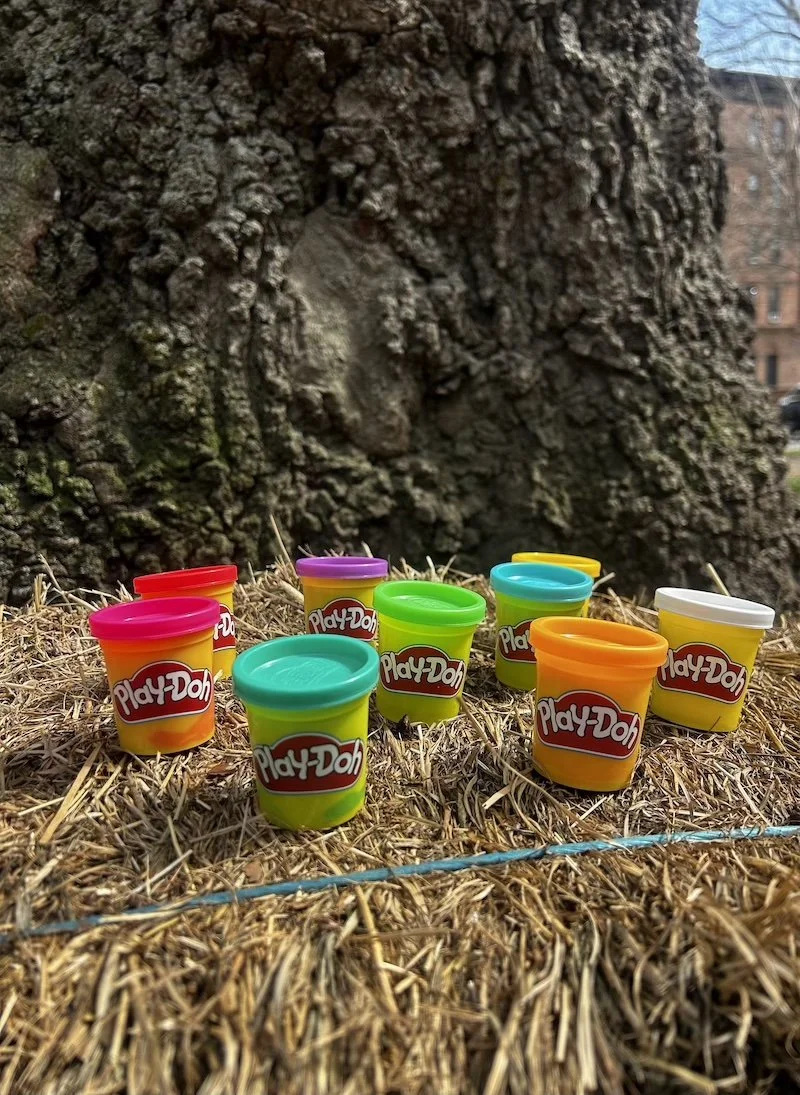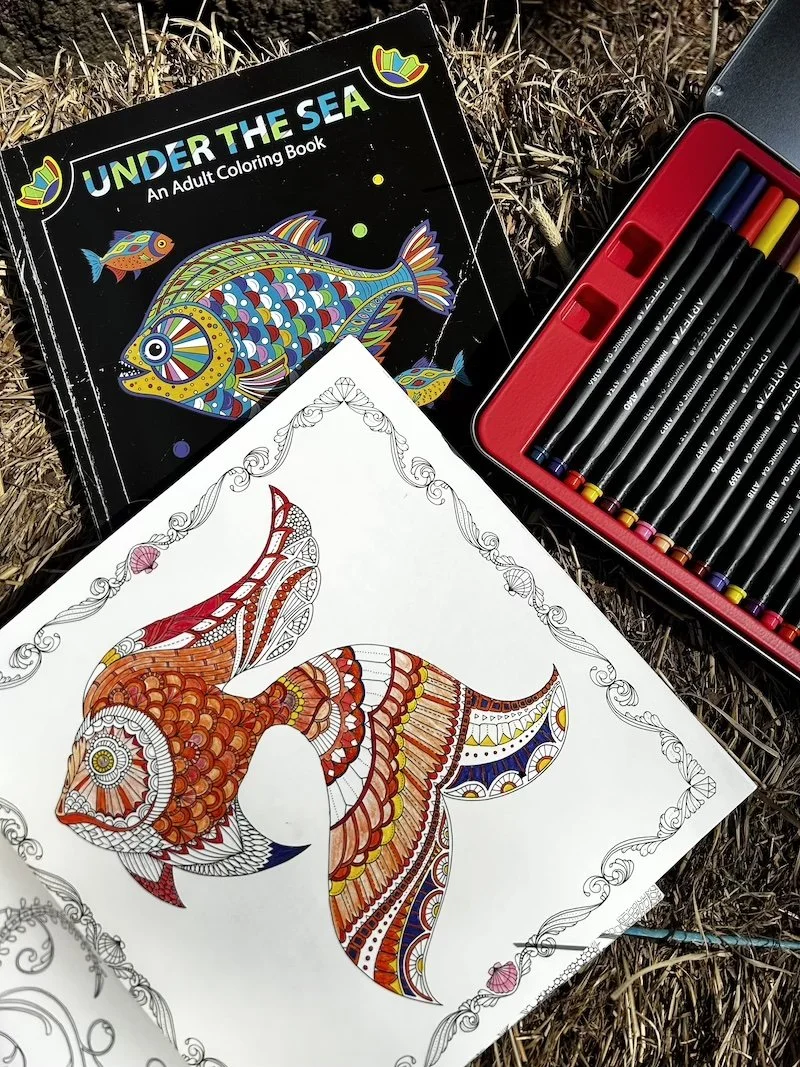The Crafted Cure: 5 Simple Crafts to Calm the Mind
How often do you come home from work and freeze from the sheer amount of responsibilities left in the evening, despite showing up for work for the entire day? While there are many things you could need at that moment, the pressure usually manifests in “I need a drink.”
I’m sure I don't have to tell you that instant gratification isn't really what you need, and that it won't reap any real benefits in the long run. I will, however, invite you to ask yourself, “when's the last time I had play time?” If your mind shot back to elementary-high school, please keep reading, as this blog is especially for you. In a society that glorifies the grind, finding ways to relax and center ourselves is more important than ever. Life can't always be all work, no play.
While many of us may think of crafts as activities for children, there’s growing evidence that engaging in simple crafting as an adult can have significant mental health benefits. Whether you're looking to unwind after a stressful day or simply engage in a mindfulness activity, crafting can be an excellent way to calm your mind and nurture your well-being amidst busy circumstances you can't really change at the moment. Here are five simple crafts you can try to help soothe your nerves, improve focus, and enhance your mental clarity after a long day, during some free time, or as a calming activity with friends.
1. Play-Doh: Sculpt & Relax
According to a study in the Journal of Occupational Therapy, the repetitive motion of kneading and shaping clay can be a therapeutic activity that promotes a sense of calmness. The information your brain receives from the positive sensory feedback of the simple act of using your hands can divert your focus from anxiety-inducing thoughts, giving you a meditative experience. Plus, handling the clay has been shown to improve focus and reduce tension. Simply grab your favorite color and get molding. You can search for sculpture inspiration or just knead the dough in any motion to release stress.
What You'll Need: Play doh or any modeling clay, your hands, and sculpting tools (optional)
Why It Works: Sculpting engages your senses to promote relaxation and improves motor skills and focus through fine motor coordination (ability to control small muscles in the body).
2. Calm Down Jars: Visual Meditation in a bottle
Creating a calm down jar is not only a fun craft but also a mindfulness tool that can help adults de-escalate from moments of stress. The act of shaking the jar and watching the glitter slowly settle mimics deep breathing techniques that promote relaxation. The American Journal of Public Health found that visually focusing on a soothing object helps lower heart rates and calms the nervous system. It’s like creating a portable meditation tool you can use anytime. Pour all the materials into a jar and seal it tightly. Shake the jar whenever you feel stressed, using it as a moment to take deep breaths and refocus.
What You'll Need: Clear jar or bottle, water, glue, glitter, beads or small objects.
Why It Works: Shaking and watching the substances move in a calm down jar increases mindfulness by encouraging focus on calming visuals.
3. Painting: Express Yourself with Color
You don’t need to be a skilled artist to enjoy the benefits of painting. Never start anything with a comparative mindset, especially when it's for the benefit of your health. As long as you have the materials, it doesn't matter what's going on at the museums. Painting engages your creativity and allows you to immerse yourself in hands-on an activity where the focus is on expression, not perfection.
Dipping your brush in vibrant colors and spreading them on a blank canvas can be a therapeutic way to release built-up tension. You may Google a photo for inspiration or simply glide the brush however you feel called and see what you mindfully create.
What You'll Need: Any type of paint (Acrylic or watercolors are a great choice), paint brushes, and a canvas or paper.
Why It Works: A study published in the Art Therapy journal found that participants who engaged in painting experienced reduced levels of cortisol.
4. Collaging/Scrapbooking: Relive Happy Memories
Scrapbooking is not just about crafting a beautiful album. This hand-on activity helps you revisit special memories, express creativity, and practice gratitude. A study in the Journal of Positive Psychology found that recalling and reliving positive moments can improve mood and boost overall happiness. When you engage in scrapbooking, you’re not only creatively constructing something, but you’re also creating a deep sense of joy by reflecting on past positive experiences. You may choose a theme or topic, or simply arrange random photos in whatever order you feel called to.
What You'll Need: An empty scrapbook or journal, photos (or any paper memorabilia), glue, and pens/markers.
Why It Works: Scrapbooking improves mood and helps ground you. The focused and repetitive motions of cutting and gluing are soothing and enhance creativity.
5. Coloring: Finding Peace in Every Hue
Coloring is a powerful way to engage both your mind and hands. Studies have shown that coloring can help reduce stress and promote mindfulness by engaging both the left and right hemispheres of the brain. This process activates creative thinking while also calming the mind through repetition. In a study from Harvard Medical School, participants who spent time coloring mandalas experienced a significant reduction in anxiety, showing that art-making can have therapeutic effects on the brain. The best part about using a coloring book is that the picture is already printed. You just have to bring it to life with color.
What You'll Need: Coloring books or blank paper, colored pencils, markers.
Why It Works: Increases focus and clarity by channeling thoughts into a calm, creative endeavor, reducing stress and anxiety.
How Making things Mends your Mind
Research shows that engaging in simple crafts can have a profound effect on mental health, particularly in reducing stress, anxiety, and depression. A 2014 study published in the journalPLOS ONE found that making visual art can improve connections throughout the brain known as the default mode network (DFM). This system is associated with the brain's state during wakeful rest, like daydreaming, but it's also active when we're focusing on internal thoughts or future plans. Here's a deeper look into the science behind why crafting can calm the mind:
Reduces Cortisol Levels: Studies have demonstrated that crafting can lower cortisol, a hormone associated with stress, which is often elevated during times of anxiety and tension. Activities like knitting, coloring, and sewing activate the parasympathetic nervous system (“rest & digest system”– think opposite of fight or flight), promoting a relaxation response.
Mindfulness and Flow State: When you're focused on a crafting task, your mind enters a state known as “flow,” a term coined by psychologist Mihaly Csikszentmihalyi. In this state, you're fully absorbed in the activity, which can enhance focus and decrease negative thinking. Research shows that flow is associated with lower levels of stress and greater feelings of well-being.
Boosts Mood: The brain stimulation that is created with crafting can release endorphins (natural pain killers) that can improve mood. Some believe that this can also stimulate nerves in your hands that communicate with the limbic system of your brain, the part of the brain that deals with our emotions.
Enhances Emotional Well-being: Crafting provides a creative outlet for self-expression, which can help individuals process emotions. It encourages mindfulness, which has been shown to reduce symptoms of depression and anxiety.
Provides a Sense of Accomplishment: Completing a craft project – whether it's a play-doh sculpture or a hand-painted picture – provides a real sense of achievement. This feeling of success can boost self-esteem and encourage a positive mindset, especially in a society where accomplishments are measured by productivity.
Prioritizing Play Time
The same way you prep your clothes for the gym or for work the night before, set your materials up somewhere that is easily accessible. Plan, if possible, which day of the week you can take at least 15 minutes to just play, be, and create. It doesn't have to be alone either. If you have children or roommates, invite them to join in taking a step away from the grind and into your mind, through creation.
Simple crafts are a powerful way to relax and calm the mind, especially with a busy schedule overwhelmed with responsibilities and inevitable stress. I discuss even simpler ways to relax amidst the hustle here. Whether you’re picking up a tub of play doh, dabbling in watercolor, or experimenting with a new scrapbook, these activities can offer a peaceful calming from the noise of daily urban life. The best part? You don’t need to be a master crafter to benefit from any of these activities—just a willingness to slow down and enjoy the creative process.
So, the next time you’re feeling overwhelmed, ask yourself, when’s the last time I had playtime?
Disclaimer: Information and content on this website is provided for information and educational purposes only, and is not intended as a substitute for the advice provided by your physician or other healthcare professional. No information offered here should be interpreted as a diagnosis of any disease, nor an attempt to treat or prevent or cure any disease or condition. If you have or suspect that you have a medical problem, promptly contact your healthcare provider. Do not disregard professional medical advice or delay seeking medical care because of something you have read on this website. Always speak with your healthcare professional before taking any medication, nutritional or herbal supplement. Information and statements regarding dietary supplements have not been evaluated by the Food and Drug Administration and are not intended to diagnose, treat, cure or prevent any disease.



